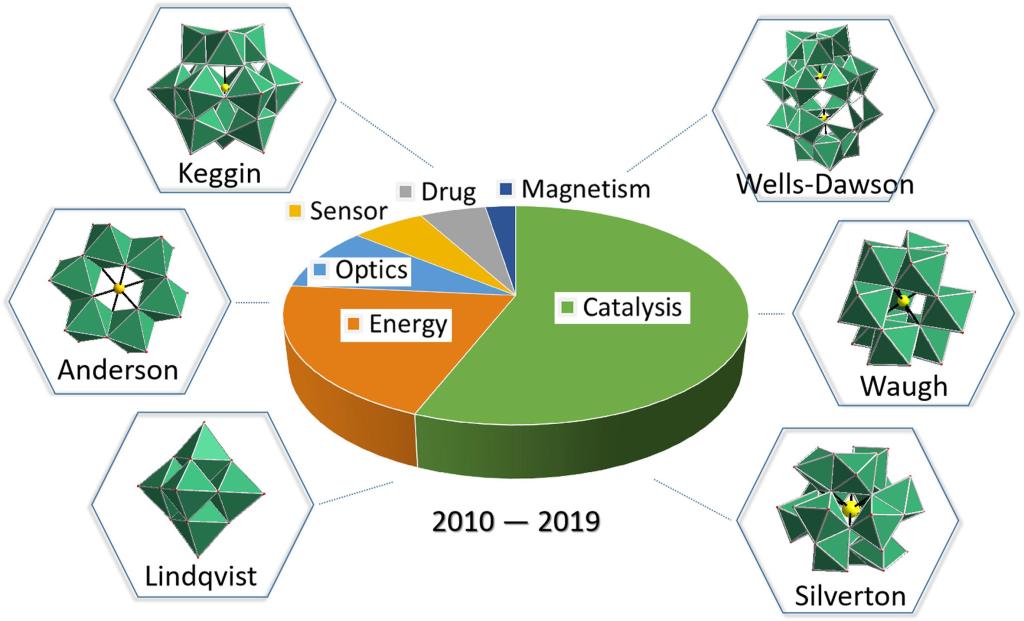As a classic branch of metal−oxygen clusters, polyoxometalates (POMs) are constructed from high-valence transition metals (TMs, e.g. VV, NbV, TaV, MoVI, and WVI). POMs have been developed as a class of promising smart material candidates in catalysis, energy, sensors, optical or magnetic materials and so on, not only due to their multitudinous architectures but also their good redox activities and outstanding electron and proton transport capacities. Therefore, developing novel POM-based composite materials has long been focused in POMs chemistry.

Figure 1. Main applications of POM-based materials in recent ten years.
The research group of Prof. Junwei Zhao has been mainly engaged in the structural design, microstructure and photoelectromagnetic research of POM-based functional materials in Henan Key Laboratory of Polyoxometalate Chemistry, College of Chemistry and Chemical Engineering, Henan University. Related achievements have been published in international journals like Angew. Chem. Int. Ed., Nano Energy, Chem. Commun., Chem. Eur. J., Inorg. Chem.. Recently, on the invitation of a Nanoscale editor, Prof. Zhao’s group reviewed the latest progress in polyoxotungstate materials in the field of electrochemistry. Starting from the structure construction of POMs, this review mainly summarizes some representative advances in POM-based composite materials (PCMs) with electrochemical applications (e.g. proton conduction, electrocatalysis and electrochemical sensing) in the past decade. Furthermore, it is pointed out that the design and preparation of new PCMs is not only the foundation but also the core in the sustainable development of POMs science. Moreover, it is believed that multi-functional composite materials would bring more opportunities to POMs. This work is supposed to provide some useful guidance for future research of PCMs. Dan Wang, a postdoctoral fellow in College of Chemistry and Chemical Engineering, is the first author and Prof. Junwei Zhao is the corresponding author, and Henan University is the corresponding institute of the first author (Nanoscale, 2020, 12, 5705; DOI:10.1039/c9nr10573e).
Links to this review:
https://pubs.rsc.org/en/content/articlelanding/2020/NR/C9NR10573E#!divAbstract


